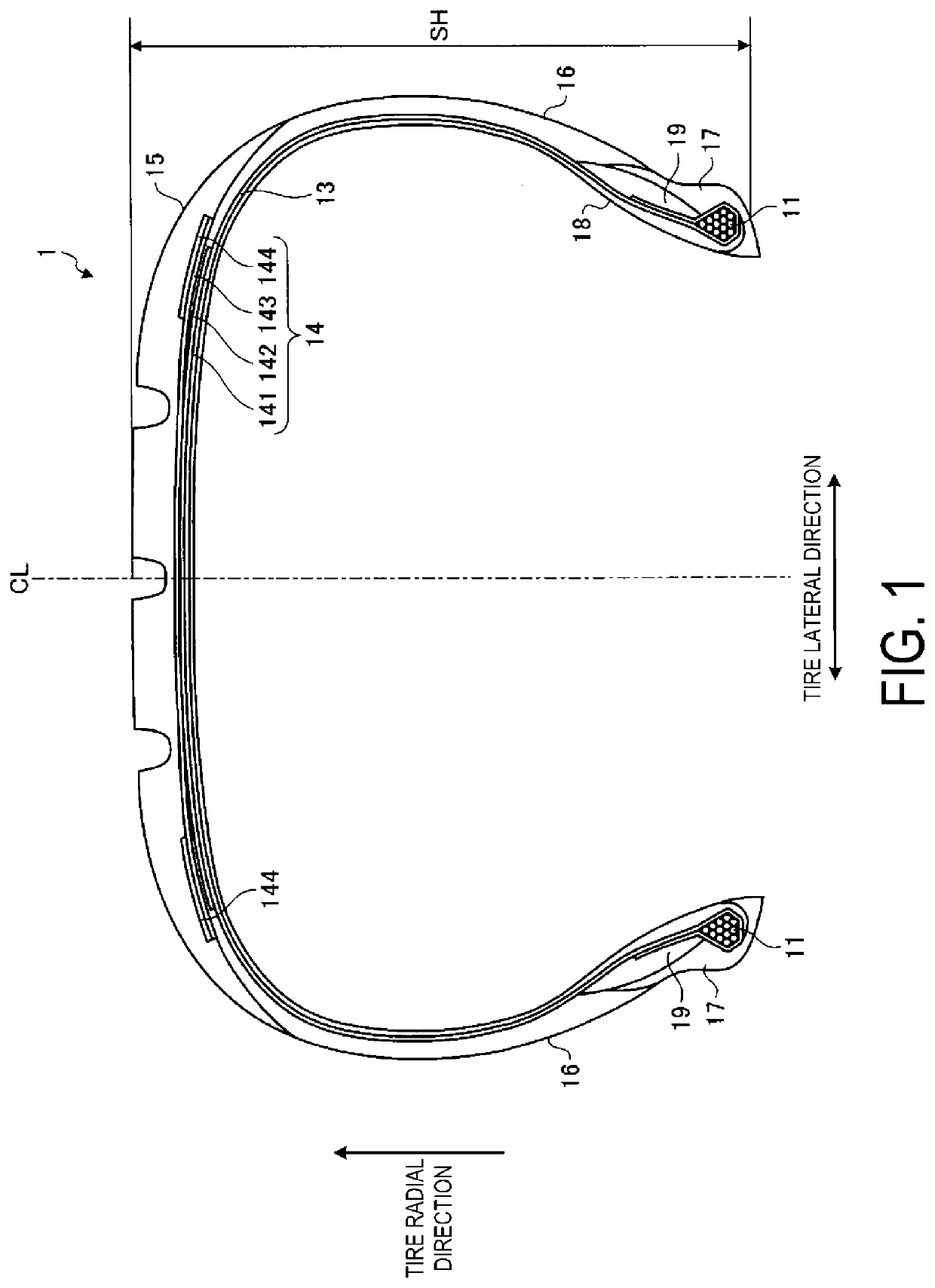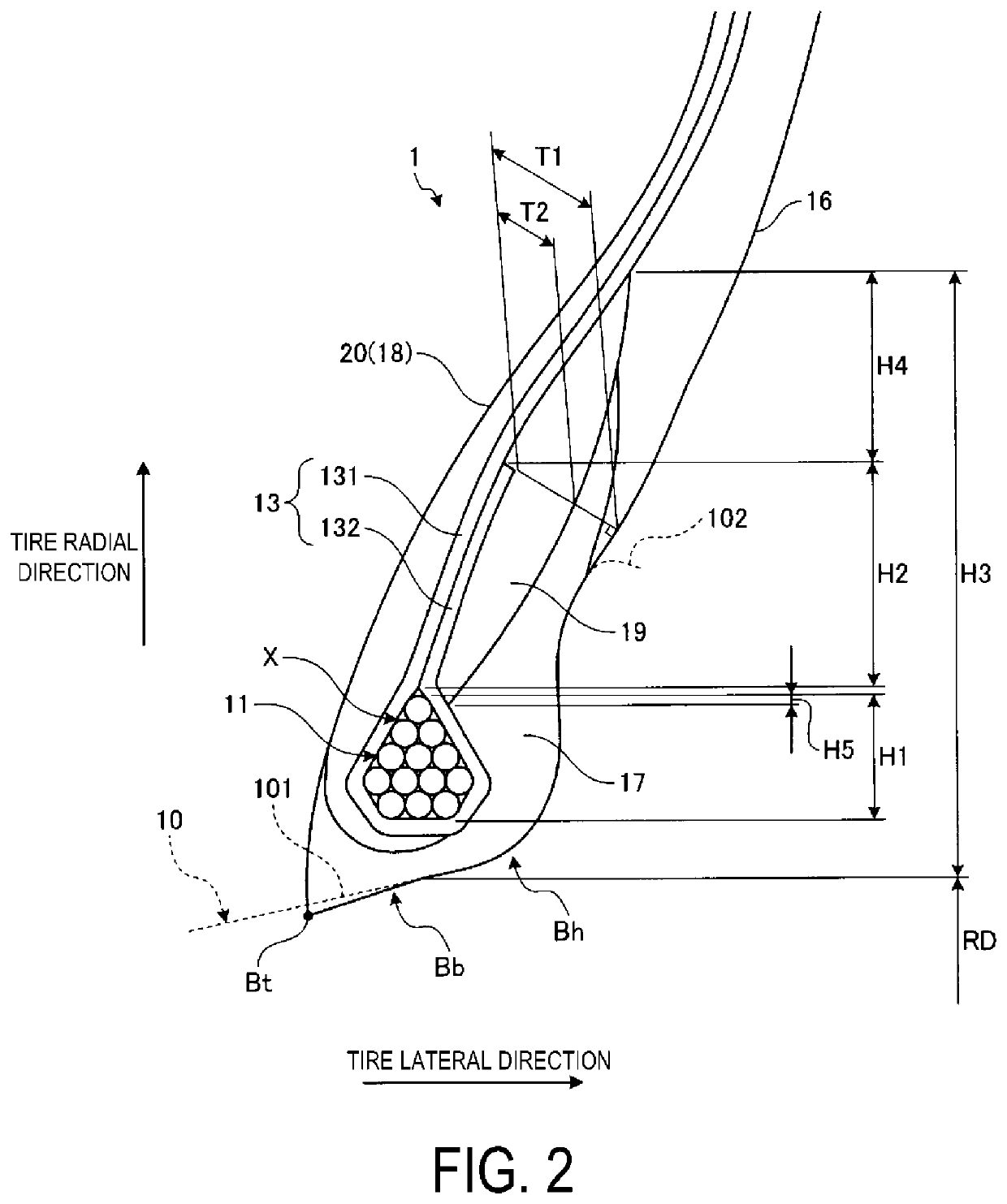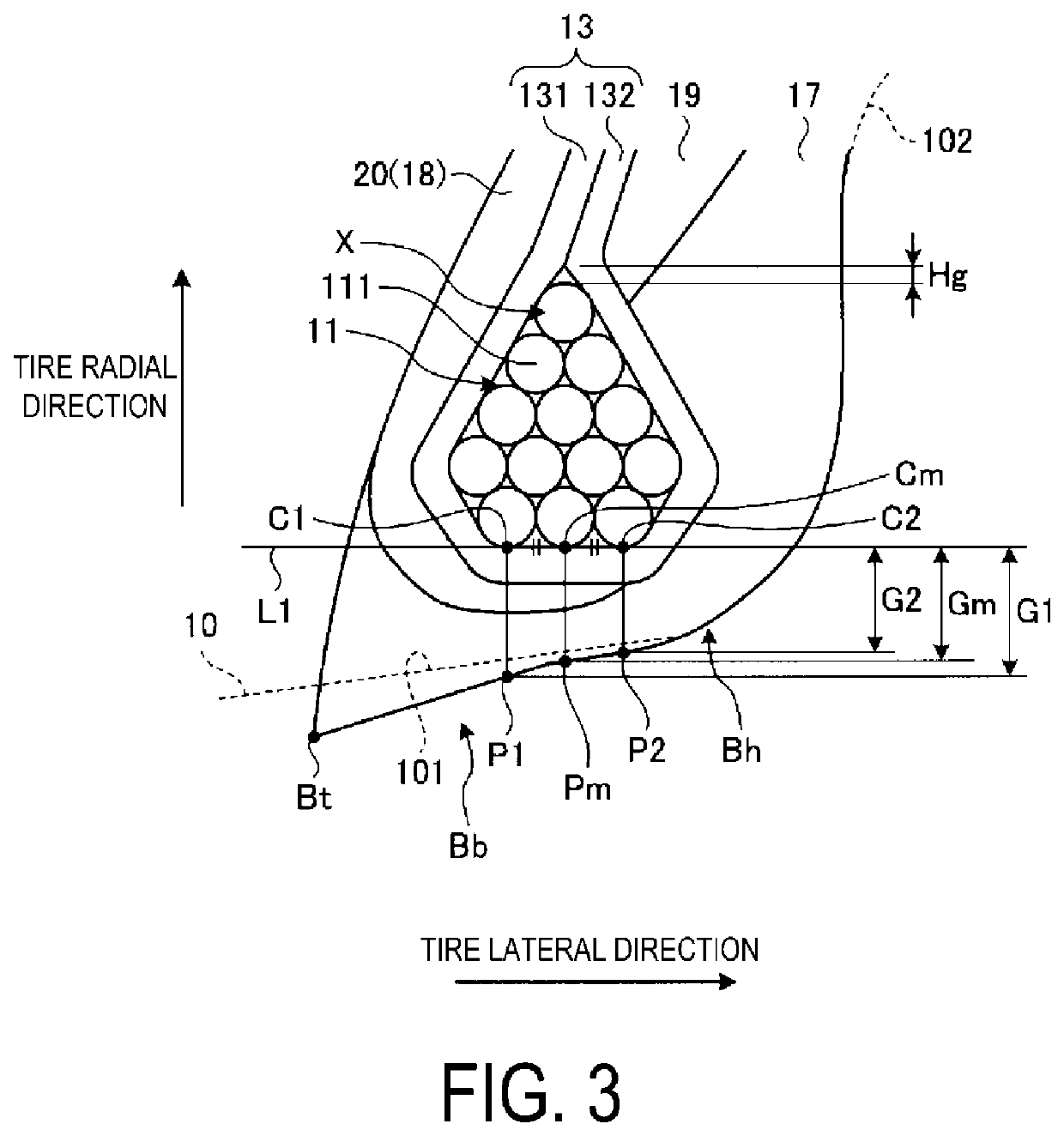Pneumatic Tire
a technology of pneumatic tires and rims, which is applied in the direction of tire beads, rolling resistance optimization, vehicle components, etc., can solve the problems of deterioration of tire durability due to the omission of bead fillers, and achieve the effects of reducing tire weight, ensuring the durability of the rim fitting portion, and suppressing deterioration of workability of tire mounting
- Summary
- Abstract
- Description
- Claims
- Application Information
AI Technical Summary
Benefits of technology
Problems solved by technology
Method used
Image
Examples
example
[0153]FIG. 14 is a table showing results of performance tests of pneumatic tires according to the embodiment of the technology. FIG. 15 is an explanatory diagram illustrating bead cores of a test tire of Conventional Example.
[0154]In the performance test, a plurality of types of test tires having a tire size of 205 / 55R16 were evaluated for (1) tire mass and (2) durability.
[0155](1) The tire mass is calculated as the average value of the masses of five test tires having the same structure. The measurement results are expressed as index values and evaluated with the Conventional Example being assigned as the reference (100). The smaller the values in this evaluation, the lighter the test tires are, which is preferred. Additionally, when the index is 99 or less, it can be said that the weight of the tire is reduced compared to that of the existing tire structure including bead fillers.
[0156](2) In the evaluation for durability, the test tires are mounted on rims having a rim size of 16...
PUM
 Login to View More
Login to View More Abstract
Description
Claims
Application Information
 Login to View More
Login to View More - R&D
- Intellectual Property
- Life Sciences
- Materials
- Tech Scout
- Unparalleled Data Quality
- Higher Quality Content
- 60% Fewer Hallucinations
Browse by: Latest US Patents, China's latest patents, Technical Efficacy Thesaurus, Application Domain, Technology Topic, Popular Technical Reports.
© 2025 PatSnap. All rights reserved.Legal|Privacy policy|Modern Slavery Act Transparency Statement|Sitemap|About US| Contact US: help@patsnap.com



